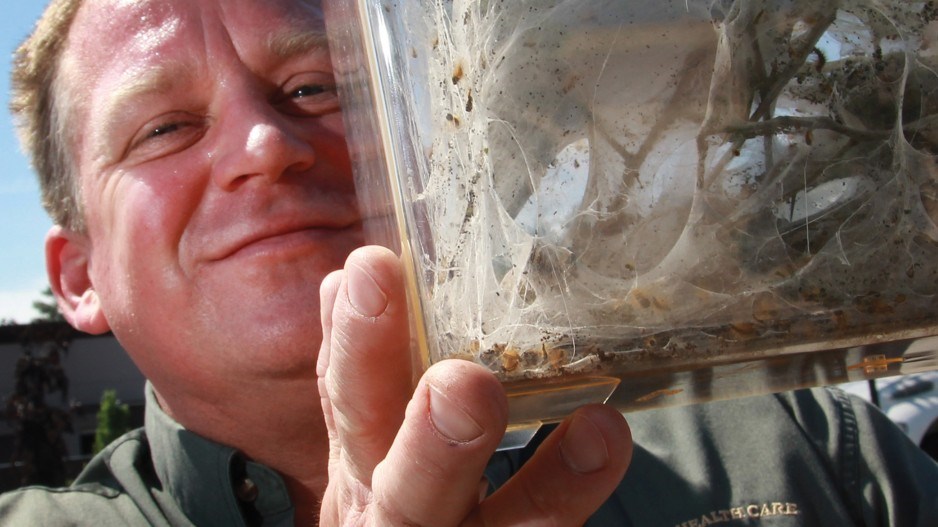As an arborist who’s been working in B.C. for the past quarter-century, Wyatt Sjodin is on the front lines of a changing environment.
Sjodin, a district manager for Surrey’s BC Plant Health Care Inc., said within our complex natural surroundings with countless names, definitions and ecosystems, there’s one drastic change he’s seen in the Lower Mainland, where he works.
“I’ve noticed within the last two to three years insects and diseases that I haven’t really noticed here before,” Sjodin said. “Just anecdotally I feel it’s getting warmer and warmer, earlier and earlier.”
Sjodin helps deliver a wide range of environmentally friendly horticultural services for BC Plant Health Care including tree pruning, planting, soil compaction and erosion control. Sjodin, who spends his days out in the field, said he’s been encountering some strange environmental patterns lately.
“Today, for example, I’m noticing all the cottonwood fluff floating. And usually historically you don’t see that until mid-June, so our spring is looking like summer now and the seasons are three or four weeks earlier this year than they have been in the past.”
Cottonwood trees gestate their seeds, sending them flying in the springtime wind, helping to spread the species over large areas. Sjodin added there’s also a number of new bugs entering the Lower Mainland that aren’t local.
“There’s the Douglas fir cone moth that is indigenous to the Interior of B.C., where it’s usually warmer and drier, and I’ve never encountered it down here until last summer. The tiny larvae burrow into a new green cone in the spring and then people get sap leaking out of the cones on the Douglas fir trees in their backyard, and they could be 80- to 100-foot-tall trees. So you can’t really do anything to treat this pest.”
The B.C. Ministry of Environment breaks down various sections of the province into multiple categories, from broad-ranging eco-domains to smaller biogeoclimatic units that represent classes of ecosystems under the same regional climate.
But our natural environment is not governed by borders, and the whole of B.C. is part of a much bigger ecological picture that extends all the way north and south of the continent.
With the California drought currently crippling our neighbours to the south, Sjodin, part of whose job is sustainable-practice pest management, said a new problem has sprouted up. Ladybugs are usually brought in to help curb invasive species, but they are in low supply due to water shortages in the U.S.
“They’re tougher to come by as of late, that’s for sure.”
Allan Carroll, an associate professor and director of the University of British Columbia’s forest sciences undergraduate program, said the issue of new species entering the Lower Mainland might be more complicated. Carroll’s research areas include the effects of climate change on forest insect populations and advanced techniques for detection and monitoring of forest insects.
“I would be a bit more careful in forecasting species introduction,” Carroll said. “Climate change certainly has the potential [to usher in new insect species], there’s no question about it.
“But we also have to acknowledge the fact that we have more container ships coming in from various ports of Asia, and that’s the real source. The fact that they’re getting here and staying here could be related to climate change, but the rates of introduction have increased enormously as a consequence of globalization.”




